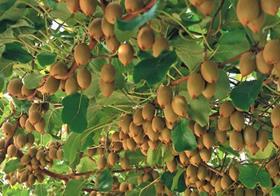
Kiwifruit exports from Australia this season are in station-keeping mode, maintaining ties to foreign customers and markets with low volumes until the sun comes out on exchange rates and trade can be ramped up again.
While the Australian-US dollar exchange has dipped slightly since its November peak, exporters are still dealing with an Australian dollar worth US$0.90, compared to US$0.65 this time last year. Combined with continuing high costs for water, kiwifruit exporters little growth in foreign sales.
“Exports have been difficult for several years as a result of the high Australian dollar exchange rate,” stated Jamie Craig of Bunbartha Fruit Packers, the country’s largest kiwifruit exporter.
“We continue to maintain markets on reduced volume of exports against the day when our competitive position improves. We are not expecting to increase volumes in this season.”
Water cost and availability continues to be an issue for growers in the northern Victoria region where the majority of Australia’s kiwifruit production takes place, as it is for growers around the country. Increasing water demand from Melbourne and other urban areas in the state is exacerbating the problem.
“Water which until as recently as 2000 cost an irrigator about A$40 per megalitre has traded in the years since at prices as high as over A$1,000,” Mr Craig told Fruitnet.com
“The result has been a contraction in the irrigation industry. Some businesses are simply closing down and others are downsizing to survival mode. Some orchards – permanent plantings – have been abandoned and others have survived by allowing equity to erode as financial resources are diverted to water.”
“A couple of years ago when water expense peaked at over A$1,000 per megalitre it was in some cases over 10 per cent of the total cost of production.”
On the positive side, the upcoming season looks excellent in both volume and quality, according to Mr Craig, and should replicate the records for both of last year.
“The first harvest will be in the third week of March and we should be offering good volume to market by the 1st of April,” he said.
Bunbartha Fruit Packers has also been experimenting with early ripening of the product, which meant last season the company was able to secure good early season sales from retailers with ready-to-eat product.



